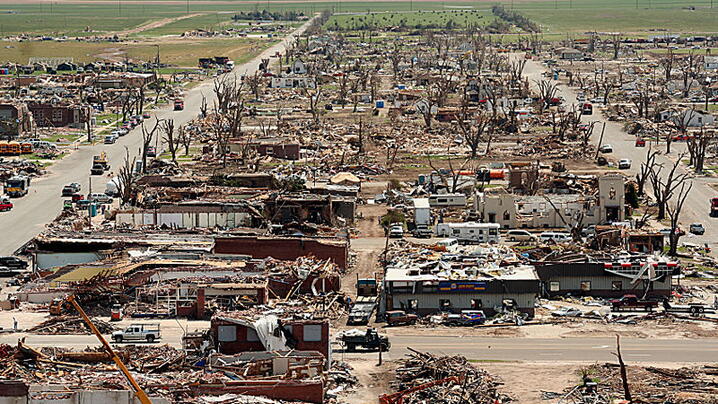
Just days after more than one hundred people were killed in the tornado that ripped through Joplin, Missouri, more severe storms struck portions of Oklahoma, Kansas, and Arkansas yesterday in what has already become the deadliest year for tornados in the U.S. since 1953. As the nation extends its support and sympathies to these communities, local governments know that once the search and rescue operations are finished, the longer process of restoration and recontruction will depend on the continued leadership of city and county managers.
Fortunately, many previous examples of post-disaster recoveries can help these communities in their own efforts. After an EF-5 tornado decimated Greensburg, Kansas in 2007, city leaders and residents knew that recovery gave them an opportunity to re-imagine their city. The community’s vision was to “keep the things that have made Greensburg and Kiowa County a good place to live, work, and own a business, and then suggest ways to build upon strengths of the community to make it prosperous, appealing, livable, and sustainable.” Based on extensive citizen invovlement, the city produced two plans, both available in the “Documents” section of the Knowledge Network:
In the aftermath of a deadly 2005 tornado in southern Indiana, Fishers, Indiana town manager Gary Huff organized the G.I.V.E. (Generosity, Involvement, and Volunteerism by Employees) committee to organize the relief efforts of roughly 250 town employees. The committee continues to coordinate the generous contributions of time and resources from city staff.
Dealing with debris is a major responsibility of local governments following extreme weather. But other hazards are also important to properly remove. An article from PBS&J on the Disaster Recovery topic page offers guidance on dealing with all kinds of post-disaster hazards.
While disaster recovery is the focus for many storm-ravaged communities in the Midwest today, preparing for disasters with proper warning systems and response plans is always important for any local government. With tornados, the speed of warning systems is especially crucial. A recent ICMA report presents six case studies of local governments using social media as a component of their emergency preparedness, including Johnson County, Kansas’s use of social media for tornado preparation and alerts.
In addition to social media, many cities are turning to their 311 systems to play a role in their emergency response and recovery efforts. Working with the 311 Synergy Group and the COPS Office, ICMA produced a toolkit featureing several articles and case studies on using 311 in emergency planning:
Keep an eye on our website for information on how ICMA and local managers are responding to the disasters in Joplin and elsewhere.
New, Reduced Membership Dues
A new, reduced dues rate is available for CAOs/ACAOs, along with additional discounts for those in smaller communities, has been implemented. Learn more and be sure to join or renew today!
